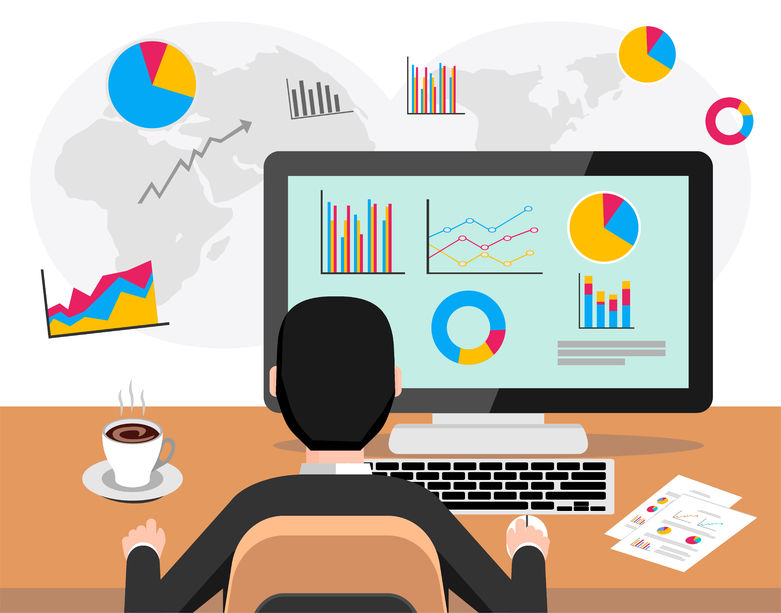What is Business Intelligence?

Image Copyright : pratyaksa @123RF
What is Business Intelligence - a definition
What is Business intelligence?
Here is a definition of Business Intelligence (BI. It is a process for increasing the competitive advantage or performance of a business or organisation by the intelligent use of available data in
decision making.
BI helps organisations achieve their
goals and objectives by giving them firstly a deeper understanding of what is going on and also feedback on how progress to the goals is being made. It is a key component of
business performance management.
First class,
leadership is clearly required to establish business intelligence in an organistion.
A definition of business intelligence is a broad category of software applications and technologies for gathering, storing, analysing, and providing access to data to help managers and staff make better business decisions. BI can include decision support systems, query and reporting, online analytical processing (OLAP), statistical analysis, forecasting, and
data mining.
Click here for alternative definitions of BI
Business intelligence has two main functions:
Here is 'what is business intelligence' is in practical terms.
- Routine Information Delivery through reports or dashboards
- Supporting Decision making through ad hoc query and analysis
Why business intelligence?
You have not only to ask the question what is it and why we need it?
Businesses or organisations are constantly faced with changing circumstances and challenges. Nothing remains static for long.
Because of this changing environment, businesses and organisations need to be continually making decisions to adjust their actions to grow profitably or enhance the services they provide.
BI can help here on two counts by utilising the data held within the organization, trusting that it is reasonably clean and accurate:
- Establishing Early Warning Systems and Detection of Trends
- Finding relevant Patterns and Insights
Estabishing a Warnings System
In establishing warnings the questions must be asked
What drives performance in your organization? What constitutes top performance?
The goal of any BI or performance management system is to align the workforce around a set of strategies , objectives and measures to achieve and maintain improvements. Ideally before a performance management system is set up some strategic planning exercise should take place using say a balanced scorecard or strategy mapping process.
A set of management measures should be derived so that management can continually assess the performance of the organization.
Each objective or goal derived from such an exercise should be associated with a measure or a few measures. e.g. the hours of training per staff member per year. The BI system can then be used to monitor or track these measures
Achieving Top Performance
To reach top performance it sometimes necessary to participate in a benchmarking exercise to reveal what is possible and realistic.
The BI system can be used to set or find targets. For example if you had several units or professionals doing the same activity, you could use BI to find the best performers and use that as a benchmark.
It takes strong leadership to drive your business through data.
Note, BI can still successfully applied at the departmental or sub department though, and it is sometimes best to start of the BI process in a small way like this to gain some earlier successes.
Unexpected patterns or trends
Unexpected patterns or trends can be discovered using BI especially if you have a powerful and easy to ad hoc querying or graph presentation system.
By inspecting the data in a BI system where you can readily pose ad hoc questions, you discover a difference in performance, which needs investigation. Is there a genuine difference? Has all the data been recorded correctly?
These discoveries can sometimes lead to breakthroughs in performance e.g. a unnoticed growing market segment, outstanding performance from one business unit.
To learn more about BI
The above summary answers the question...what is Business Intelligence, but click on the following links to find out more...
How to Create a Business Intelligence Strategy
What are the Issues with Business Intelligence